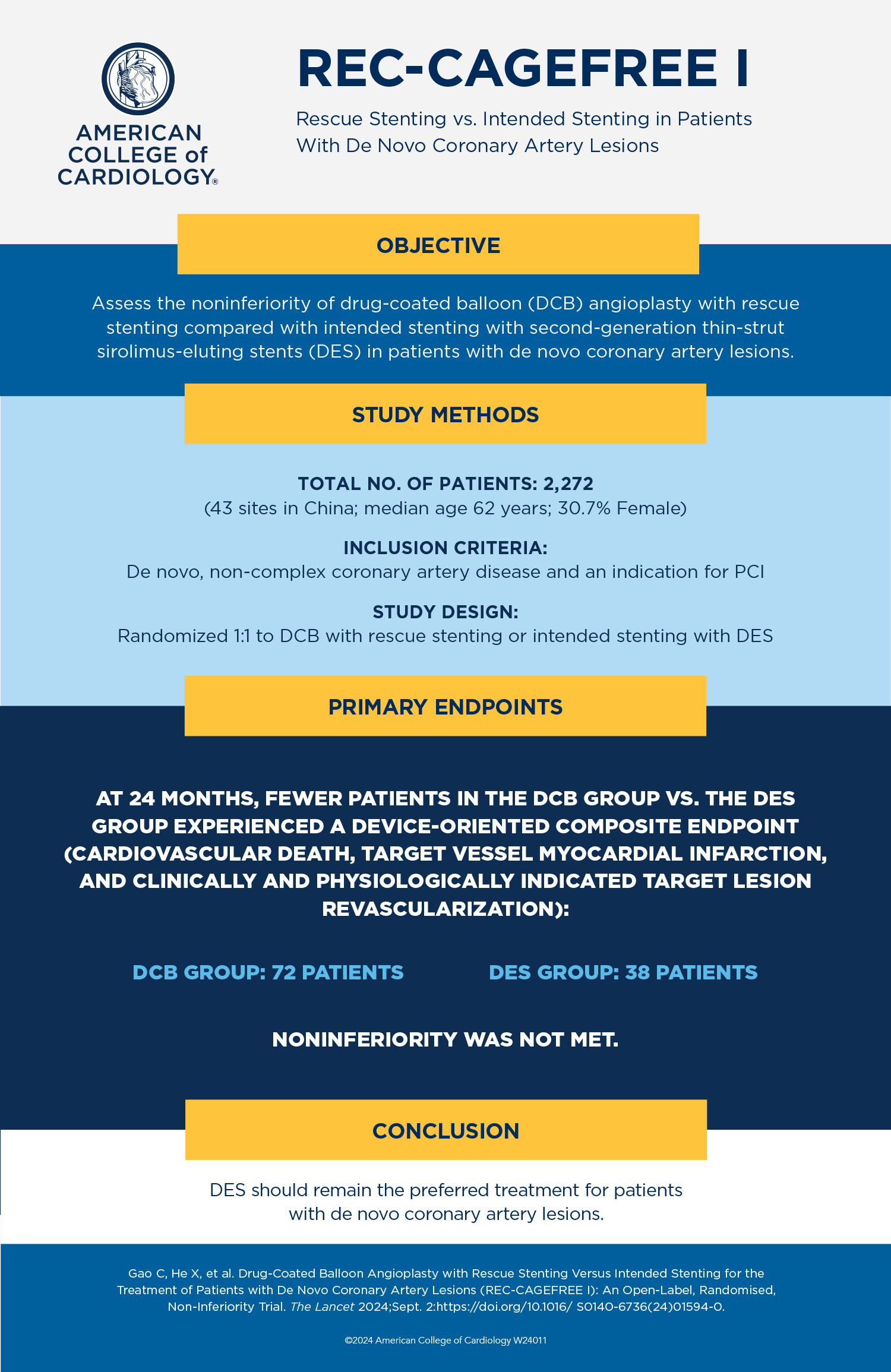REC-CAGEFREE I: DCB Angioplasty With Rescue Stenting vs. Intended DES in Patients With de novo Noncomplex Coronary Artery Lesions
A strategy of drug-coated balloon (DCB) angioplasty with rescue stenting did not achieve noninferiority compared with intended drug-eluting stent (DES) deployment for patients with de novo, noncomplex coronary artery lesions, according to finding from the REC-CAGEFREE I trial presented at ESC Congress 2024 in London and simultaneously published in The Lancet.
Researchers randomized 2,272 patients at 43 sites in China to receive paclitaxel-coated balloon angioplasty with the option of rescue stenting due to an unsatisfactory result (DCB group) or intended deployment of second-generation thin-strut sirolimus-eluting stents (DES group). Of the patients in the DCB group, 106 of 1,133 (9.4%) received rescue DES after unsatisfactory DCB angioplasty. The primary outcome was the device-oriented composite endpoint (DoCE) at 24 months.
At 24 months, the DoCE occurred in 72 (6.4%) of patients in the DCB group compared with 38 (3.4%) of patients in the DES group, with a risk difference of 3.04% in the cumulative event rate. The criterion for noninferiority was not met. During intervention, no acute vessel closures occurred in the DCB group compared with one in the DES group. Periprocedural myocardial infarction occurred in 0.9% of patients in the DCB group and 0.8% in the DES group.
"Our results show that the attempted strategy of 'leave nothing behind' by using paclitaxel-coated balloons in de novo noncomplex coronary artery disease was disproven, and DES implantation should continue to be the standard of care for these patients," said Ling Tao, MD, senior author of the study.
Clinical Topics: Invasive Cardiovascular Angiography and Intervention, Atherosclerotic Disease (CAD/PAD), Interventions and Coronary Artery Disease
Keywords: ESC Congress, ESC24, Coronary Artery Disease, Angioplasty
